
Nijmegen (G)
Nijmegen is probably the oldest
city in the Netherlands, already having been chartered as a Roman
settlement named Ulpia Noviomagus Batavorum. After the Romans left
Nijmegen became an important Frankish city, and later capital of the
Duchy of Gelre. In 1591 Nijmegen was conquered by troops of the
protestant Republic but remained a mostly catholic city. During the
19th as well as the 20th century many new catholic churches were built,
as well as other catholic institutions including a university. In 1944
Nijmegen was heavily damaged, especially on February the 22th when
Allied planes bombed the historic city centre 'by accident'. Later that
year Nijmegen was the scene of heavy fighting. In the centre several
important churches were destroyed, but outside the centre most have
survived.
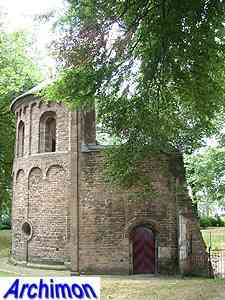

In the Valkhofpark, on the former location of the local castle, this ruin of a chapel in Romanesque style (left) can be seen. This ruin, which is often called the Barbarossa-ruin, after the emperor, dates from the 12th century. Even older is the St. Nicolaaskapel (right). This polygonal chapel dates from the 11th century.
Location: Valkhofpark
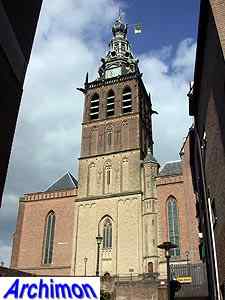
The St.
Steven's church shows a mix of late
Romanesque and both early and late Gothic styles, while the top of the
tower is in Renaissance style. St. Steven ("St. Stephen") is the
original catholic name of this church; the official protestant name is
Grote Kerk ('Great Church'). In World War Two much of the church was
destroyed. The current church therefore in many ways is a
reconstruction.
Location: St. Stevenskerkhof 61

The former reformed church of the former village of Neerbosch, which is now an integrated part of Nijmegen, is a three-aisled pseudo-basilica in gothic style. It was built in the 14th and 15th century.
Location: Dorpsstraat 112, Neerbosch

The Mariënburgkapel dates from c. 1431, and was built as the chapel of the convent Mariënburg, of which it is the only surviving part.
Location: Mariënburg 26

The reformed Petruskerk is the church of the former village of Hees. It was built as a one-aisled building in the mid-16th century. In 1952 the side-aisles were added.
Location: Bredestraat 37, Hees

This former synagogue
is one of two such buildings in Nijmegen. This is the oldest one,
dating from 1756. In 1913 it was replaced by a new one elsewhere in the
city, and after a long period of neglect was restored in 1976.
Location: Nonnenstraat 21
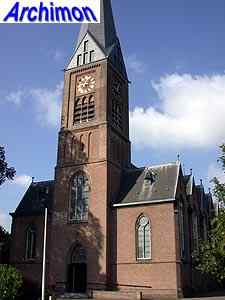
The St. Antonius Abt is the catholic church of the former village of Neerbosch. it is a three-aisled hall-church in neo-Gothic style, designed by P.J.H. Cuypers and built in 1879-1880.
Location: Dennenstraat 125, Neerbosch

The former Gereformeerde kerk is a one-aisled building with a facade in neo-Renaissance style. The church was designed by B. Bouwman and built in 1888.
Location: Begijnenstraat 20
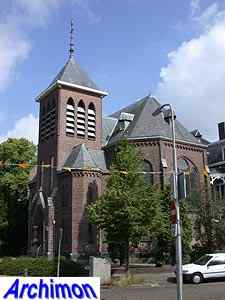
The Lutheran church was built in 1898 after a design by D. Semmelink. It was originally used by an evangelical society and has been used by its current owners since 1924. A tower was added to the neo-Gothic building in 1929.
location: Prins Hendrikstraat 79
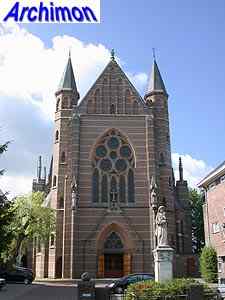
The Maria Geboortekerk was one of the first churches that were built in the new neighbourhoods outside the old centre. The nave, designed by J. Kayser sr., was built in 1900-1901. The church was finally completed in 1923-1924, when the facade, the transept and choir were built. These were designed by J. Kayser jr., who used a neo-Gothic style that fit his father's design.
Location: Berg en Dalseweg 42

The catholic St. Josef is a three-aisled cruciform basilica in neo-Romanesque style. It was designed by B.J. C. Claase and built in 1908-1909.
Location: Keizer Karelplein 19

The H. Antonius van Padua en St. Anna, better known as Groenestraatkerk, is another church in neo-Gothic style. It dates from 1909-1910 and was designed by A.A.J. Margry.
Location: Groenestraat 229
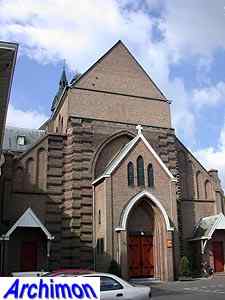
This church is also named H. Antonius van Padua and was designed by Jos. Margry, A.A.J. Margry's son. It was built in 1916-1917. A tower was planned but not built, and the upper part of the facade still makes a 'temporary' impression.
Location: Groesbeekseweg 92
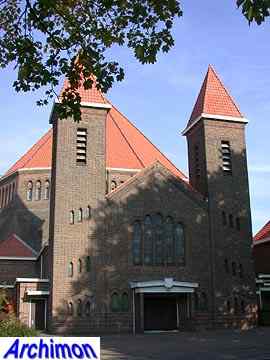
Pierre Cuypers jr. is best known for his work with his father Jos. Cuypers, but the St. Stephanus was probably designed all by himself. This dome-church in Expressionistic style was built in 1922-1923.
Location: Berg en Dalseweg 203
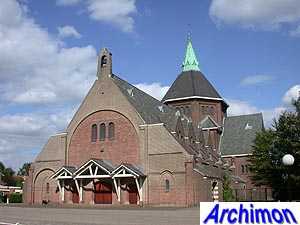
The O.L. Vrouwe van Lourdes is a big three-aisled church in Expressionistic style. It was built in 1923 after a design by an architect Thunissen. The facade of the church seems to suggest that a tower was part of the design but wasn't built.
Location: Hatertseweg 113

At the edge of the city in
1926-1928 the Neboklooster was built. This Redemptorist
monastery was designed by
J. Stuyt in an Italian-inspired
neo-Romanesque style.
Location: Sionsweg 2
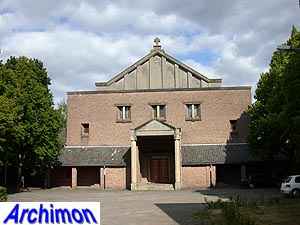
The St. Dominicus was built in Traditionalistic style, more specifically in the style of the Bossche School, in 1950-1952. It was designed by Th. Nix.
Location: Prof. Molkenboerstraat 7
Part of the municipality of Nijmegen but not a part of the city is the village of Lent, which is located on the other side of the river Waal, opposite Nijmegen's center. Lent has two churches.
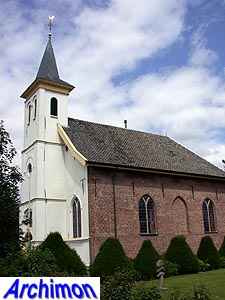
The reformed church is a one-aisled building that largely dates from the Middle Ages, even though it's unrecognisable as such since the choir was demolished in 1659 and the rest was given a new look in Classical style. The tower probably dates from 1755.
Location: Pastoor van Laakstraat 30
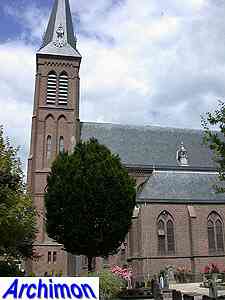
The catholic Maria Geboortekerk is a big neo-Gothic church designed by G. te riele, father of the more famous W. te Riele. The church was built in ca. 1879.
Location: Pastoor van Laakstraat 42
